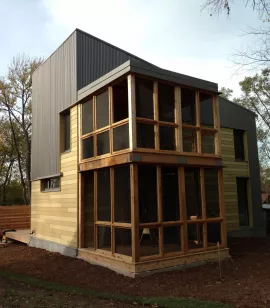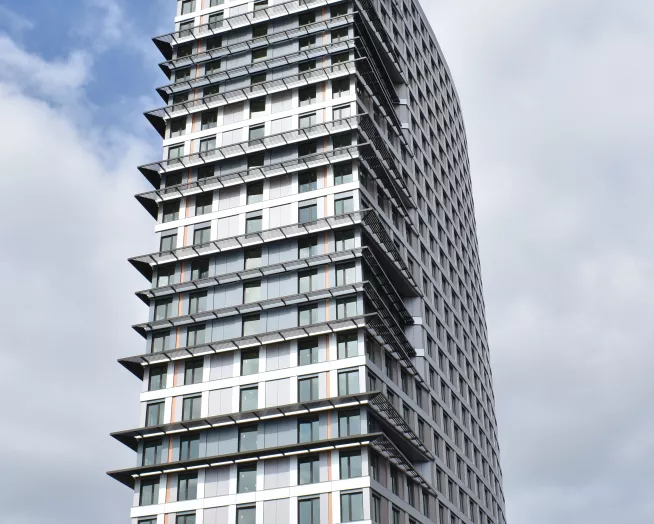
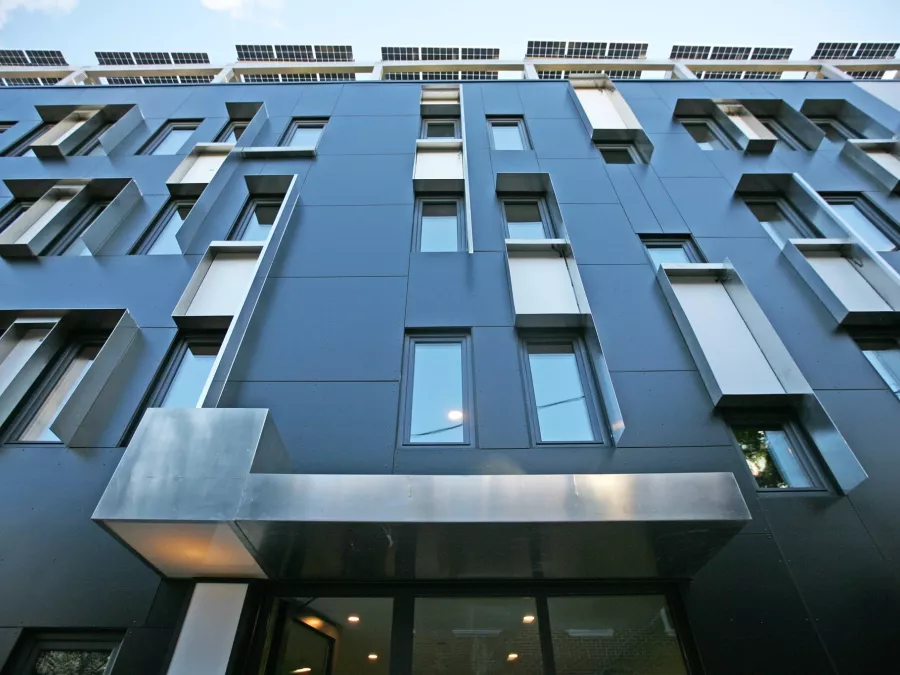
Multifamily Projects
The Phius standard is spurring rapid growth of passive buildings in the multifamily sector from coast to coast. From New York City high rises, to suburban three-flats, Phius projects are being certified all across the country.
In This Section
Scale up the project, not the budget
Average incremental cost for Phius multifamily projects over baseline
Incremental cost for many multifamily projects due to cost savings from reduced mechanical system size and distribution infrastructure
Larger buildings inherently have better economics to achieve Phius Certification than single-family homes. They have a lower surface-to-volume ratio, meaning investments in the building enclosure affect a larger area of conditioned space. Plus, the internal load density found in multifamily buildings lowers the required thermal performance of the enclosure to strike the optimal energy balance.
Multifamily Building Done Right
Multifamily developments are the largest growing sector of passive building, so the list of Phius-certified projects will only continue to grow.

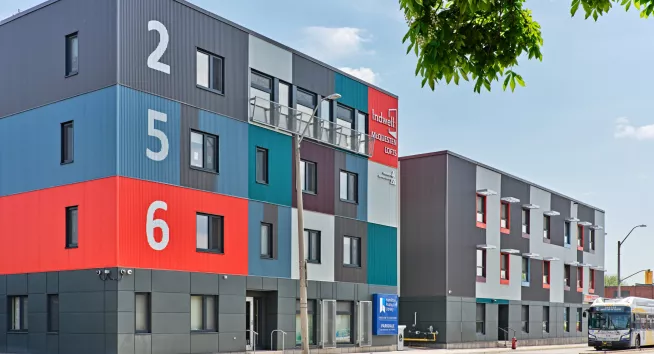
McQuesten Lofts, Ontario
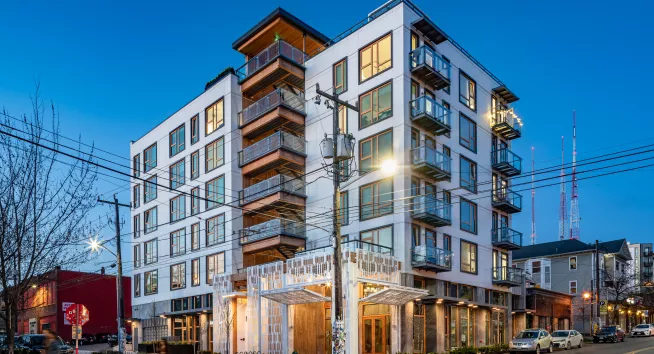
Solis, Washington
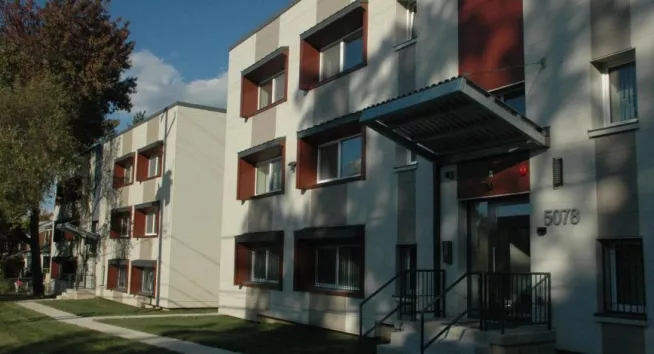
Weinberg Commons, Washington DC
Tools & Tips for Success
Standards
Guidebook
Browse all Resources

Become a Phius Certified Professional
